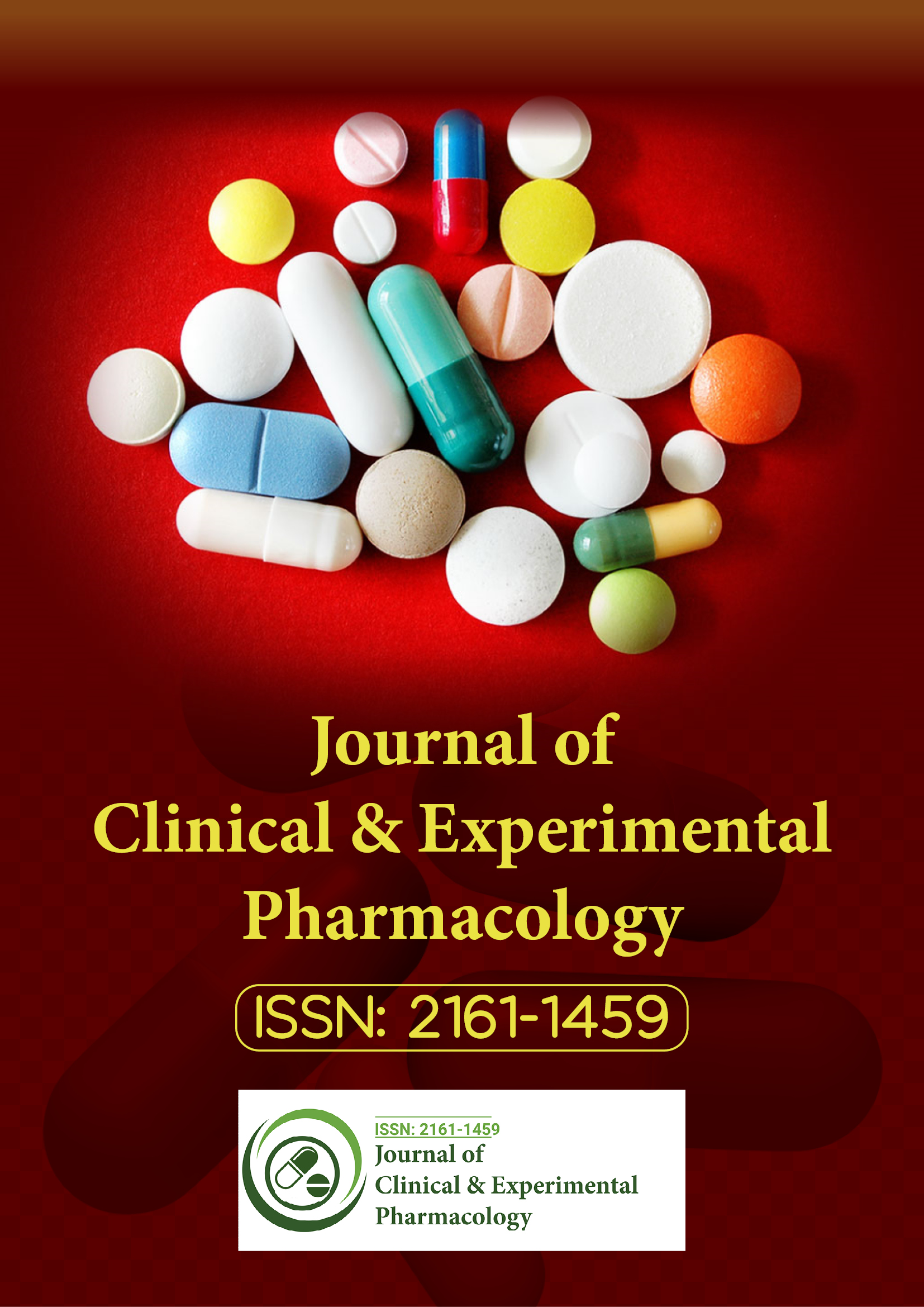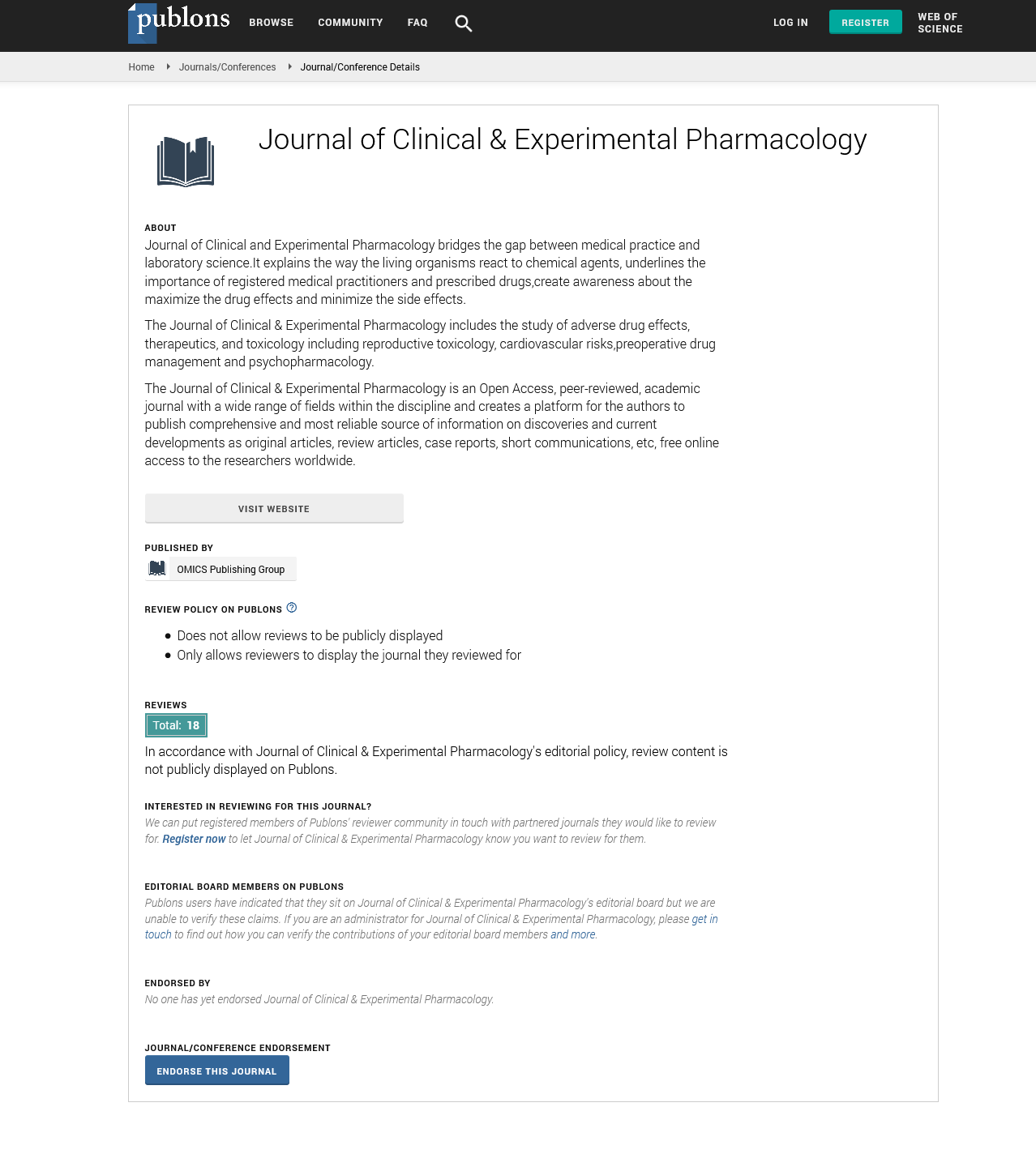Indexed In
- Open J Gate
- Genamics JournalSeek
- China National Knowledge Infrastructure (CNKI)
- Ulrich's Periodicals Directory
- RefSeek
- Hamdard University
- EBSCO A-Z
- OCLC- WorldCat
- Publons
- Google Scholar
Useful Links
Share This Page
Journal Flyer

Open Access Journals
- Agri and Aquaculture
- Biochemistry
- Bioinformatics & Systems Biology
- Business & Management
- Chemistry
- Clinical Sciences
- Engineering
- Food & Nutrition
- General Science
- Genetics & Molecular Biology
- Immunology & Microbiology
- Medical Sciences
- Neuroscience & Psychology
- Nursing & Health Care
- Pharmaceutical Sciences
Prospective analysis of actively screened adverse drug reaction profile presented into the inward set up in government tertiary hospital in Sri Lanka
International Conference and Exhibition on Pharmacovigilance & Clinical Trials
October 1-3, 2012 DoubleTree by Hilton Chicago-North Shore, USA
Hettihewa LM
Scientific Tracks Abstracts: Clin Exp Pharmacol
Abstract:
ADR is one of the leading causes of hospitalization. Most of the patients are admitted to the hospital after prior treatment for the considered illness they suffer. Active screening of ADR and reporting is still not successful to the standard levels due to inadequate support by the medical personnel. We have seen many admissions due to the ADR despite of consistent pharmacovigillence in the studied teaching hospital. This study was planned for qualitative analysis of ADR which can be detected in the inward set up and to assess the severity reversibility and results of the challenge test for these ADR. The data from inward patients were actively screened by different methods. ADR were detected by considering the admission criteria, active screening of clinical suspicion, analysis of presentation symptoms and investigations. Data were collected prospectively from 2009 to 2012. A WHO recommended and medical officers attached to the department did the active reporting. Eighty eight data sheets were assessed for cause, duration, reversibility and the severity of ADR through referring the Hartwig�s Severity Assessment Scale. Majority ADR (76%) was due to non antibiotic group (nabADR) and only 27% of reports were related to the antibiotics (abADR). In abADR group, 44% of was due to penicillin and others are related to quinolones, macrolides and cephalosporins. Most of the nabADR were related to the administration of NSAIDs. 87.5% of abADR had been recovered and only 60% had been recovered in nabADR group. We further analyzed the severity of ADR and found that 51% of it was moderate, 31% was severe, 8% was mild and 5% of ADR was fatal in severity. Most of the severe and moderate ADR were due to penicillin and NSAIDs. In nabADR, NSAID group had caused the higher fraction (46%). In our study cohort, only 12% of patients had history of drug allergies and only 5% of patients who developed ADR had undergone the challenge test.Realistic application of preparative history assessment for drug allergy before the treatment of antibiotics and NSAIDs should be more practiced. Medical officers should be more concerned about the active screening of these fatal and severe ADR which were more related to the NSAIDs and penicillin. We conclude that active screening of the ADR can significantly prevent the fatal and severe ADR reported with the common drugs like penicillin and NSAIDs.
Biography :
Hettihewa has completed her Ph.D in 2003 from Ruhuna University with the collaboration with Nagasaki University. She is the head of Department of Pharmacology and the coordinator of pharmacy in the faculty of medicine. She has published more than 25 papers in reputed journals and already submitted her previous work to OMICS conference held in Philadelphia in 2011.

